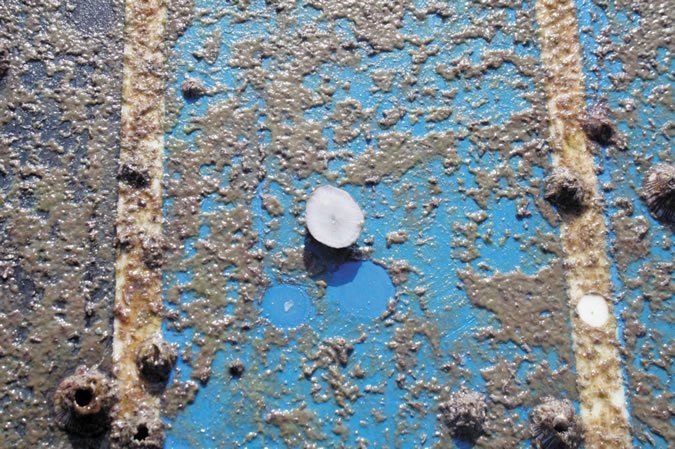
While gathering data for this months bottom paint report I took comfort in the notion that Im not the first to have barnacles on the brain.
For seven years, Charles Darwin immersed himself in the study of barnacles, and with each passing year, he seemed to become more and more confounded. Darwins consternation-and later, an almost maniacal obsession with the barnacle-is well documented in Rebecca Stotts compelling book Darwin and the Barnacle.
To a sailor, its no wonder why a 19th-century scientist would dedicate himself to the study of something so seemingly insignificant. Even today, in the age of high-speed ships, the tenacious creatures are a hurdle to a speedy voyage. Before and during Darwins time, more than swift passage were at stake. How many ships were lost at sea for want of an extra knot?
Darwins life overlapped with the last decades of the age of sail, when the first steel ships began appearing-and European maritime trade was well established in the barnacles favorite habitat, warm, tropical seas. Steel ships complicated the usual defense against barnacles-pounded copper sheathing. While early coatings makers like Tarr & Wonsoon began perfecting copper bottom paint, scientists obsessed with taxonomy sought to know more of this common enemy. Here are just some of the facts regarding the familiar acorn barnacle that serve as a reminder of what a marvelous foe we face.
The acorn barnacle lifecycle involves four distinct stages. The tiny larvae, appearing like alien shrimp-crabs, are ejected from their armored parent and wander the sea as nauplii, a form of phytoplankton. The nauplii pass through six stages of growth before undergoing metamorphosis and settling on something solid.
The act of settling is impressive. An extremely tenacious, protein-based, watertight cement is secreted through glands at the base of the barnacle, which is actually the creatures head. Once settled the acorn barnacle begins arming itself against predators by forming its six-plated shell. Growth rates can vary, but in some fertile Florida waters like our test site, the diameter can triple, or even quadruple in less than three weeks.
The adult barnacle is famous among biology buffs for its prodigious penis, which is about eight times the size of its body, making it the longest penis in proportion to body size in the animal kingdom. As if this werent advantage enough, the creatures reproductive ability is aided and abetted by its ability to be both male and female-hermaphroditic, in a word. So long as there are two barnacles within about four times the diameter of the shell, there is a female within reach of a male.
Given what were up against, Im reminded of what Darwin wrote exasperatedly to his second cousin, William Darwin Fox, also a naturalist: I hate a barnacle as no man ever did.
Though Im no fan of what these tenacious creatures can do to my newly painted hull, mixed in with my loathing is more than a little admiration for a being that has managed quite impressively in the struggle for survival.









































